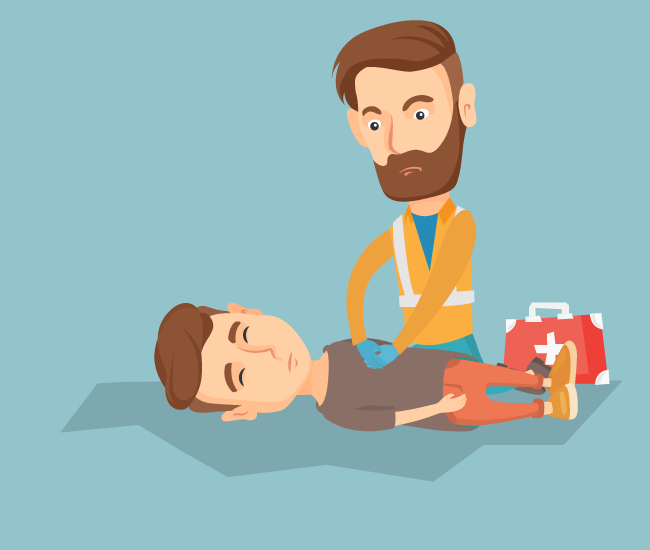When someone’s heart stops, they’re in cardiac arrest, you should jump into action to do chest compressions as soon as possible. The depth of compression is different between adults and children.
2 to 2.4 inches on an adult.
Since the update to the CPR guidelines in 2015, the depth of chest compressions shifted from 2 inches, to 2-2.4 inches deep. You’ll do these compressions at a rate of 100-120 compressions per minute, on the sternum in the center of the chest. This is the same for both men and women, so don’t be afraid when the need to do CPR arises.
Watch our Adult CPR Training Video
1/3 the depth of the chest on a child or a baby.
The rate of compressions is the same here as on an adult: 100-120 compressions per minute. When doing chest compressions on a baby, use two fingers. For a child use one hand.
Watch our Child CPR Training Video
Watch our Infant CPR Training Video
What if I hear cracking sounds? Did I break a rib?
When you do compressions properly, you’re likely going to hear cracking sounds. Don’t stop doing CPR. These sounds can be caused by cartilage or ribs cracking, but the damage is not serious. Remember: the reason you’re doing CPR is to help the person until paramedics, EMTs or the next level of care arrives. You’re giving the person a fighting chance, and you should continue to do compressions. Breaking a rib is not something to be afraid of. You can’t make their situation worse, and you can’t be sued for giving someone CPR thanks to the Good Samaritan laws.


Comments
Thanks
You’re welcome!
Glad you emphasized scene safety. It is an often overlooked element when initiating resuscitation efforts. Also, great video.